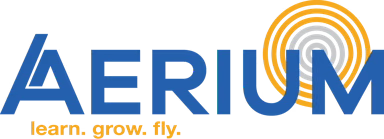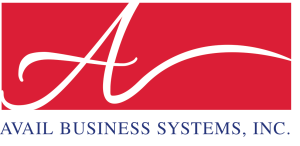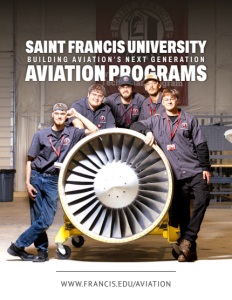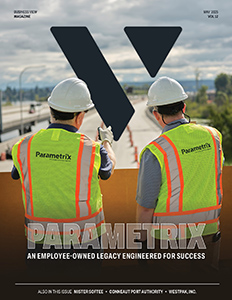Building Aviation’s Next Generation
Technical training and career pathways converge for this leading aviation education center
Saint Francis University in Pennsylvania is tackling the aviation industry’s maintenance technician shortage head-on with innovative programs designed to create skilled professionals while strengthening the local workforce. The university offers dual pathways: pilot training and aviation maintenance, which respond to projected industry growth through 2030 and beyond.
“There is a massive shortage of aviation maintenance technicians in the industry,” explains Brianna Pavkovich, Director of Saint Francis University’s Aviation Maintenance Technician Program. “We created this program as a workforce development initiative because we wanted to train up local and keep local students and workforce. The AMT skills are valuable in many different industries, not just aviation maintenance, because they cover the skill sets of almost anything in manufacturing.”
The university’s strategic location in central Pennsylvania provides unique advantages for aviation education. “When we started this maintenance training school, our goal was to address industry needs in a meaningful way,” says Br. Marius Strom, Engineering Instructor at Saint Francis. “If you think of central Pennsylvania, Western Pennsylvania, what usually comes to mind are steel and coal. But, just in the Johnstown area, we have Kongsberg, Leonardo DRS, Lockheed Martin Aeroparts, the Army National Guard, and other manufacturers and employers who are either already in the aviation space or that are aviation adjacent. It seemed like a great location to establish an aviation maintenance training school.”
The programs serve multiple purposes: contributing to nationwide aviation workforce needs while addressing local demand. This approach creates a sustainable talent pipeline that benefits both students seeking stable careers and employers requiring specialized skills. As commercial air travel continues to rebound post-pandemic and the defense sector maintains strong demand, Saint Francis University is positioning its graduates at the intersection of opportunity and industry need.
The Evolution of Pilot Training
Saint Francis University’s aviation journey began in 2017 with funding from the Commonwealth of Pennsylvania to establish a flight training program. This initiative arrived when regional airlines were facing unprecedented pilot shortages following the FAA’s 2013 rule change requiring 1,500 flight hours for commercial airline pilots, a sixfold increase from previous requirements.
“In 2017, we started work with Nulton Aviation Services, now known as Nulton Aviation Flight Academy,” Strom explains. “The goal was to get students with no experience through their commercial certificates and get them on the road to becoming flight instructors and professional pilots. We use that pool of flight instructors to teach new students and help those instructors move up the line from there.”
The PENNDOT grant provided crucial financial support, enabling Nulton Aviation to expand its facilities while offering students significant cost reductions. “The grants we were able to offer defrayed about 30% of those costs. It was a nice bit of seed money to help students get started on their journeys,” says Strom.

The program has shown impressive growth since its modest beginnings. Nulton Aviation has expanded its fleet and increased student enrollment, with graduates returning as flight instructors and creating a sustainable training ecosystem. The university’s aviation specialization demonstrates remarkable flexibility, accommodating various career paths. “Our specialization gives people a pathway to become professional pilots, change careers, or pursue undergraduate education while training professionally,” notes Strom.
This adaptability is particularly valuable as the commercial aviation sector continues recovering from pandemic disruptions. Boeing’s 2023 Pilot and Technician Outlook projects a need for 649,000 new pilots globally over the next 20 years, with North America alone requiring 128,000, making Saint Francis’s program a timely response to a critical industry challenge.
Hands-On Innovation
While the flight training program took off in 2017, Saint Francis University expanded its aviation education portfolio in 2022 with support from the Appalachian Regional Commission. “The grant was purely for the Aviation Maintenance Program,” Strom notes. This funding acknowledged the strategic importance of technical training in a region traditionally associated with manufacturing but increasingly diversifying into aviation-related industries.

The program’s curriculum adheres to Federal Aviation Administration (FAA) standards while incorporating forward-thinking approaches to technical education. “Our curriculum has to align with FAA standards. It’s a set curriculum that matches what they say we need to teach in lectures, lab, and projects,” Pavkovich explains. “But we do things differently. We’re unique in that we focus more on the future.”
This future-oriented approach manifests in how students learn. “Instead of working out of books, we’ve tailored the program to be more in line with where the industry is going. We run all our programming online. Students still must be there physically, but they’re doing virtual paperwork just like you would in the industry with virtual logbooks,” says Pavkovich.
The program maintains this balance between digital instruction and hands-on practice, reflecting the evolving nature of aviation maintenance. As aircraft incorporate more composite materials and sophisticated electronics, maintenance professionals need broader technical knowledge than ever before.
Creating Career-Ready Professionals
Saint Francis University distinguishes its aviation programs through industry-aligned equipment and training methodologies that prioritize career readiness. “We actually have a cool donation from SkyWest Airlines; a CRJ 200 which is an airframe that’s currently still being used in the industry,” Pavkovich says. “It’s very current technology, as are our CF 34 engines that we teach our students on. If you’re going to one of the regional airlines, you’re probably going to use the equipment that you’re learning on here.”
This access to contemporary aircraft systems offers students practical experience with the same technologies they’ll encounter in their careers. Industry partnerships like the one with SkyWest are increasingly vital as airlines face unprecedented maintenance backlogs following pandemic-related workforce reductions and subsequent travel surges.
In flight training, the program balances traditional instruction with modern avionics exposure. “We are moving into an age of glass cockpits,” Strom explains. “Nulton has been proactive in incorporating advanced instruments into their aircraft, including installing AHRS . These instruments get students used to interacting with modern systems.”
The program maintains a pedagogical balance, recognizing the value of foundational knowledge. “We still want to start students with the basics. If you have a steam gauge, it’s more intuitive to explain how readings of altitude or airspeed appear on that dial,” notes Strom. “Having slightly older instrumentation in primary flight training works better when students are getting to know the airplane, then Nulton introduces more advanced items as their understanding progresses.”
From High School to Aviation Careers
On establishing strategic educational pipelines, Saint Francis University connects high school students with aviation careers through innovative partnerships and curriculum integration. “We are very closely working with Somerset County Technology Center. We’ve helped them implement Choose Aerospace Curriculum,” Pavkovich explains. “They have an articulation agreement with us where students get their first semester completely covered, as long as they can test out of our equivalent testing. It allows them to save an entire semester’s worth of money and expedite into the workforce faster.”
Educational acceleration represents just one dimension of the university’s outreach. Saint Francis collaborates with local nonprofit organizations to integrate aviation-based curricula into regional schools, including the Aircraft Owners and Pilots Association (AOPA) curriculum and the Choose Aerospace program.
“The AOPA curriculum is designed to very easily meet the needs of and standards of high school curricula, addressing math, history, and other subjects, but through an aviation lens,” Strom notes. “Students get introduced to the world of aviation while seeing it from multiple perspectives. The curriculum allows students to complete requirements for the private pilot written exam before leaving high school.”
Aviation education at the secondary level has shown significant growth nationally since 2017, when the FAA began allowing high school students to earn unmanned aircraft (drone) pilot certifications. Saint Francis leverages this opportunity as an entry point.
“Many local schools have been introducing students to drones,” says Strom. “Advanced Air Mobility is coming. Getting students introduced to drones and their systems, from electric motors to advanced command and control systems, prepares them for future opportunities.”
Passion Behind the Programs
Personal dedication drives the educators at Saint Francis University, where industry experience informs teaching philosophy and program development. “Aviation safety is the absolute top priority,” Pavkovich emphasizes. “At the Aviation Education Center, I get to teach and design this program from the ground up, so we are sending successful mechanics into the workforce.”
Former industry professionals often bring valuable perspectives to aviation education. According to FAA data, instructors with direct industry experience can significantly enhance student preparedness for certification exams and workplace integration. “When I helped create this program, I wanted it aligned directly with the industry so students know exactly what they’re going into and have every skill they could possibly need,” Pavkovich adds.
For Strom, motivation stems from community impact. “What I love about the AMTS is that it gives kids in this area a new way forward. It gives them skills to get good, well-paying, family-sustaining jobs that have significant meaning,” he explains. Aviation maintenance careers fulfill this promise of stability and meaning. Bureau of Labor Statistics data indicates aviation technicians earn median salaries approximately 25% higher than the national average across all occupations, with particularly favorable prospects in rural regions where such specialized skills are scarce.

Future Program Developments
Saint Francis University continually evolves its aviation programs to anticipate industry changes and emerging technologies. The institution’s forward-looking approach addresses the rapidly transforming aviation landscape, where electrification, automation, and novel aircraft designs reshape traditional roles.
“We designed our program uniquely, so students have a university schedule with fall break, spring break, and winter break,” Pavkovich explains. “What that allows us to do is insert programming and courses that typical aviation maintenance students might not access. This year over winter break, we offered a drone certification course, and we’re currently developing an NDT (Non-Destructive Testing) course.”
The university’s supplemental certifications reflect aviation industry diversification, where specialized skills increasingly complement core competencies. The drone sector alone has grown 13.8% annually since 2018, according to FAA registration data, creating demand for technicians familiar with both traditional aircraft and unmanned systems.
“We want to cater toward what the industry needs,” says Pavkovich. “NDT is slowly losing manpower in the industry, so we want to solve that. We also want to work toward the future by developing the eVTOL curriculum, because that’s where aviation is going. We want students to be prepared when they enter the industry.”
On the pilot training side, expansion plans remain ambitious. “My hope is that we’ll grow into a two-year and hopefully a four-year collegiate aviation training program,” Strom notes. “Something that can give folks a path to employment as pilots, which is what we do now, but also gives them more of a leg up and greater diversity of options in the world of aviation.”
As the aviation industry shrugs off post-pandemic lethargy and faces accelerated technological transformation, Saint Francis University stands at the forefront of educational innovation. By combining technical expertise with forward-thinking curriculum design, the university addresses immediate workforce shortages and prepares graduates for sustainable, evolving careers in an industry defined by change.
AT A GLANCE
Who: Saint Francis University Aviation Programs
What: Comprehensive aviation education offering both pilot training and maintenance technician certification
Where: Johnstown, Pennsylvania
Website: www.francis.edu/aviation
PREFERRED VENDORS/PARTNERS

Aerium is a 501(c)(3) revolutionizing aviation technology, innovation, and workforce development in Pennsylvania and beyond. Through strategic partnerships and collaboration across industry, education, and government, Aerium drives Pennsylvania’s aviation economy forward— ensuring the next generation of aviation and aerospace professionals is prepared to lead this rapidly evolving and growing industry.
Aerium – A Nonprofit Corporation: www.aerium.org

Avail Business Systems, Inc. was established in 1993. It has evolved from a filing systems provider to a company that designs and sells office and educational furniture. We work closely with architects, contractors and other designers. We continue to provide high density storage solutions for law enforcement and government agencies.
Avail Business Systems, Inc.: www.availbusinesssystems.com


